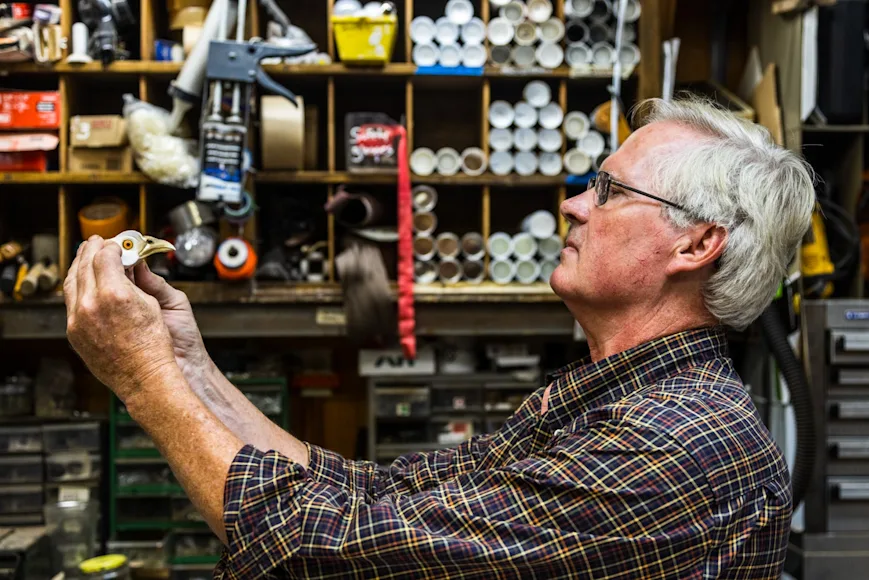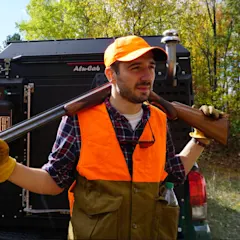AFTER VISITING Harden’s Taxidermy for a recent F&S+ photo essay
, we knew there was just too much to cover in one story. We captured examples of dozens of critters taxidermist Edward Harden and his team have mounted, but the birds really caught our attention. While we were there, he was mounting a rooster pheasant for a customer, so we decided to capture how he does this and share it with you.
Harden is known for bird taxidermy, but for his first few years in business, he shied away from working on them. Instead, he farmed out most of the bird jobs to other taxidermists in south Georgia until he learned a few tricks from one of his former students.
Today, Harden takes care of all the birds that come through his shop’s doors
. He can mount around 1.5 ducks a day. Turkeys take longer, and other birds are somewhere in between. Regardless of the species, Harden’s work is in such high demand, he’s operating at a three-year wait for bird mounts alone.
What separates Harden’s work are the hours he spends adjusting and tweaking things, like feather placement, until the bird almost looks like it could fly away. For a big bird like a turkey, this can take up to five hours, and that’s all after Harden has skinned the animal, prepped the skin, and stretched it onto a form. It’s taken years of experimentation and education for Harden to be able to do this, and today he’s at the top of his game. Here is a closer, step-by-step look at his process.
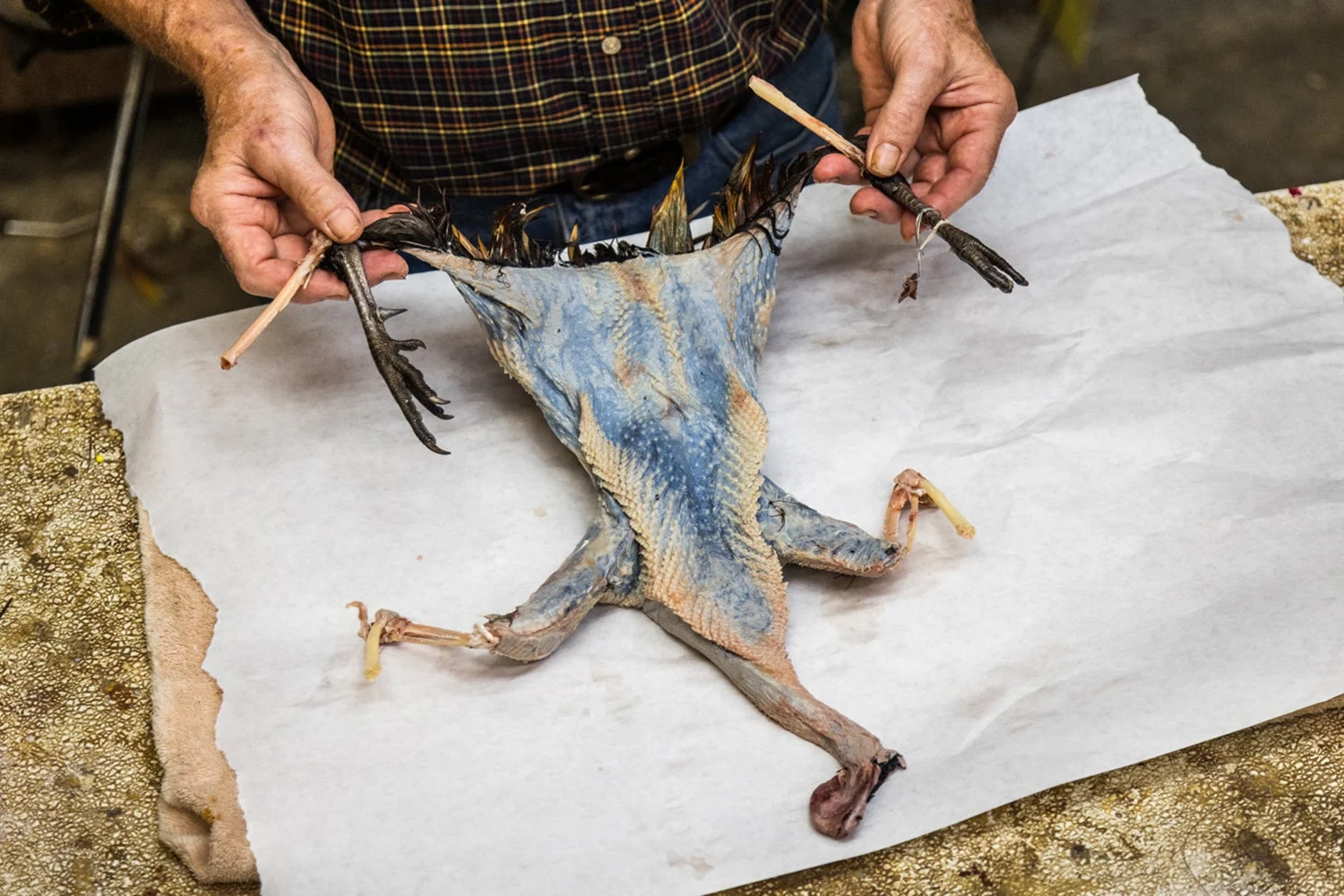
Andrew Hetherington
A fleshed rooster pheasant skin fresh from being cleaned and treated. To get it to this stage, Harden has washed the skin in Dawn dish soap three times, rinsed it in clean water, and soaked it in mineral spirits. In between these steps, he dried the bird with paper towels and constantly monitored the condition of the skin.
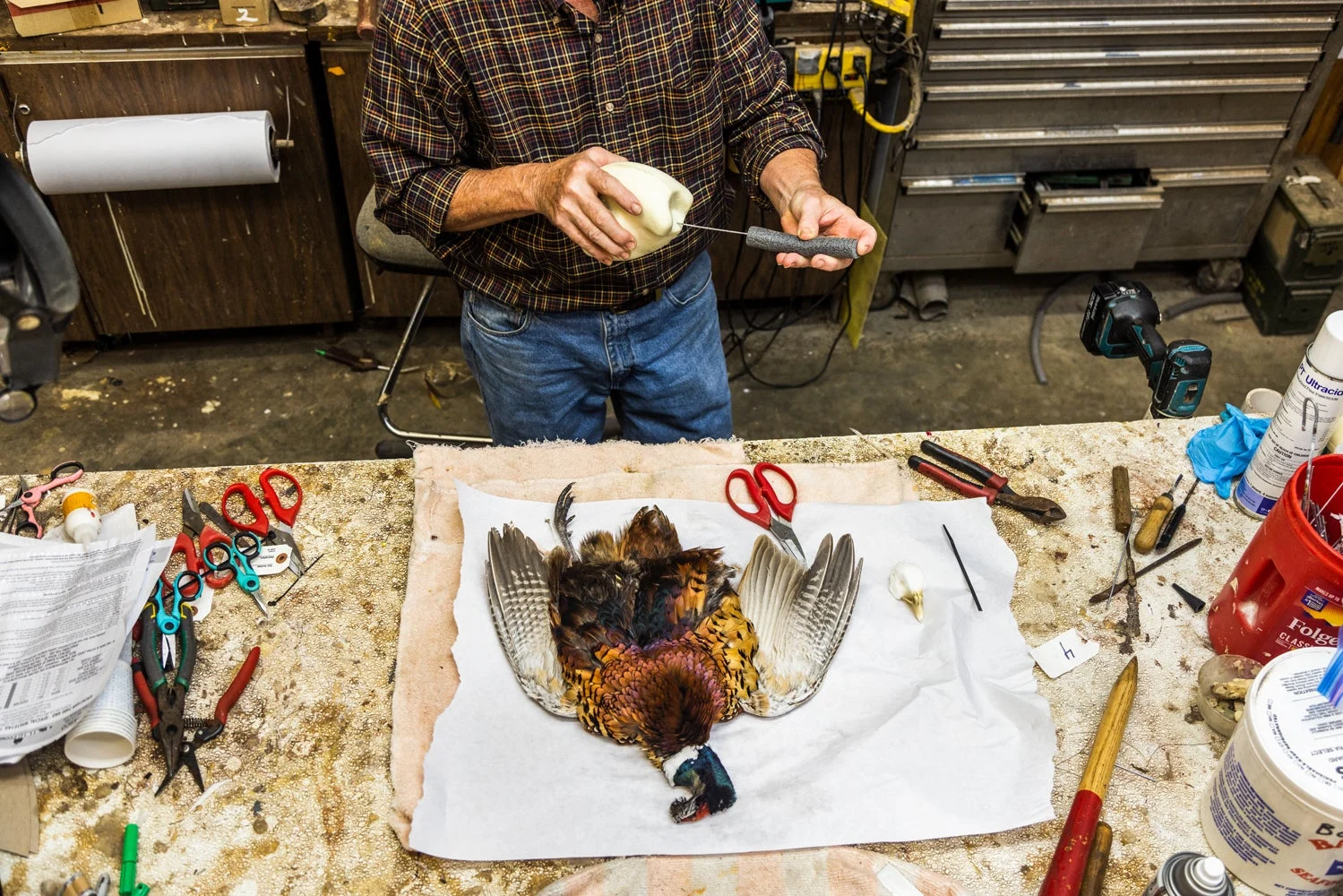
Andrew Hetherington
Harden preps a foam form that will be stuffed inside the body to give the mount its shape. In front of him, the bird has been turned outside-in. The feathers have been dried in a tumbler full of sawdust and fluffed with a blow dryer.
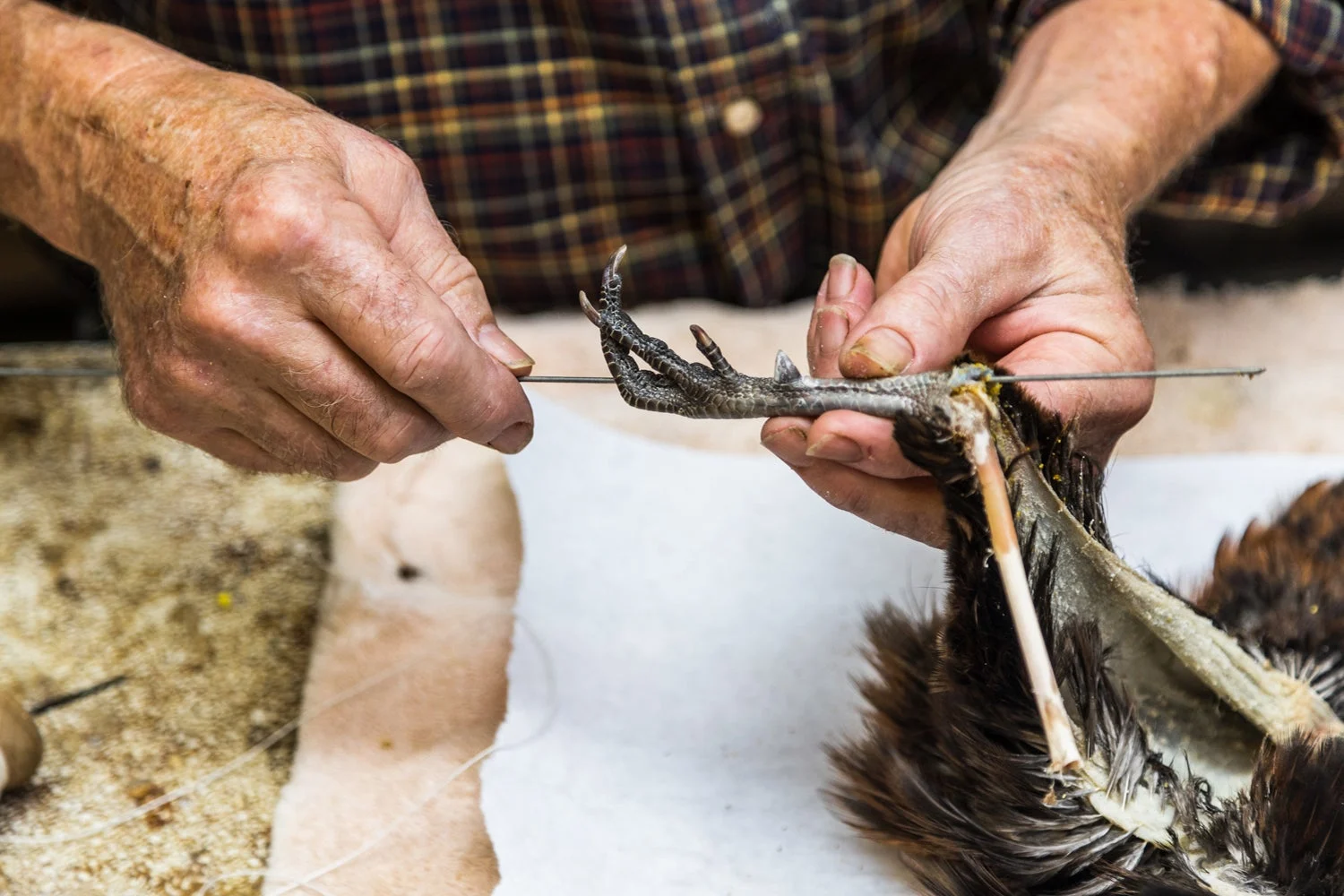
Andrew Hetherington
Harden threads wire under the leg skin of the pheasant. The wire gives the leg structure and will be used to stick the leg to the foam form.
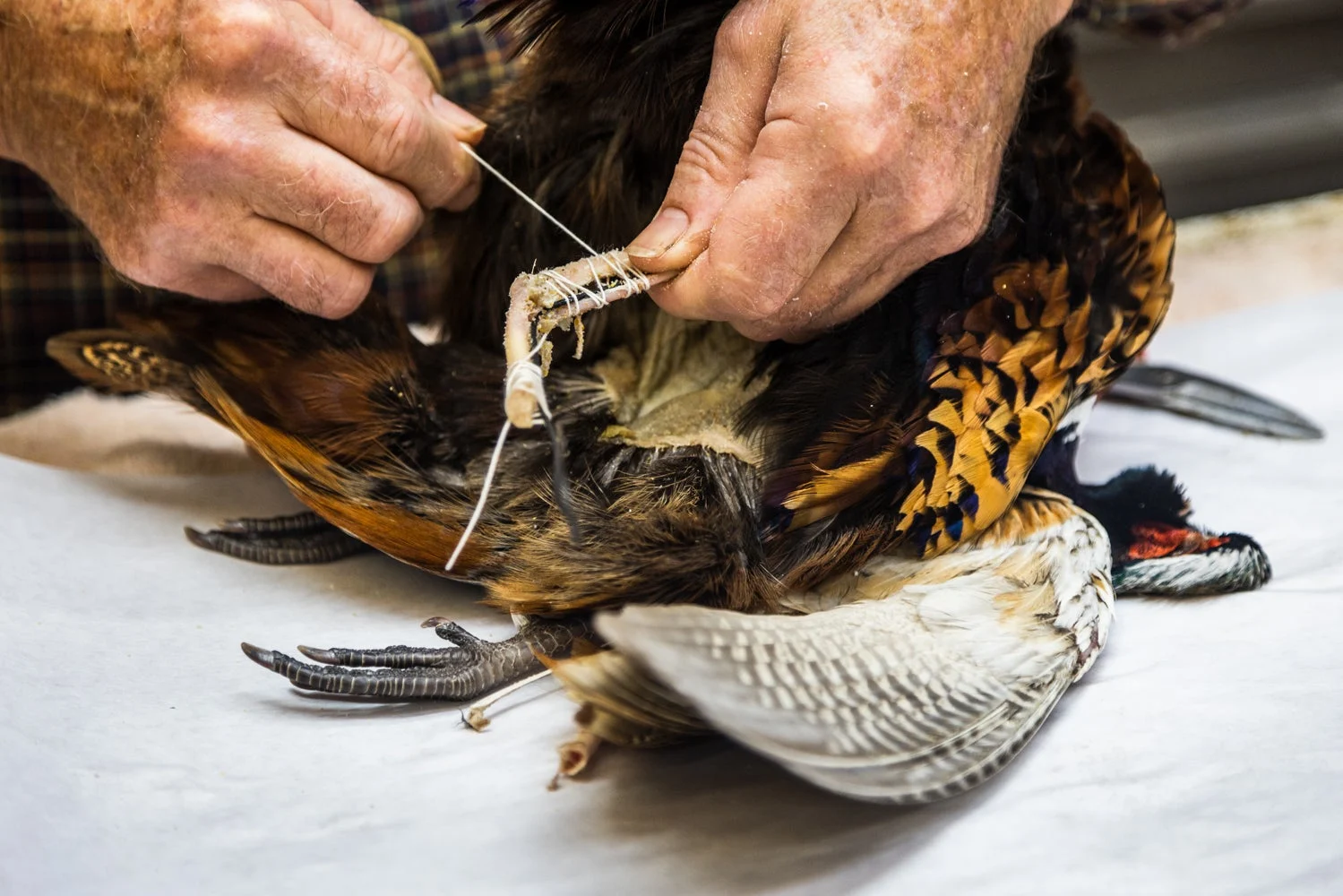
Andrew Hetherington
Harden ties the wire to the pheasant’s wing bone and anchors it to the bird’s wrist joint. One end of the wire will follow the edge of the wing to give it shape while the other end will be poked through the foam form and anchored on the opposite side of the mount.
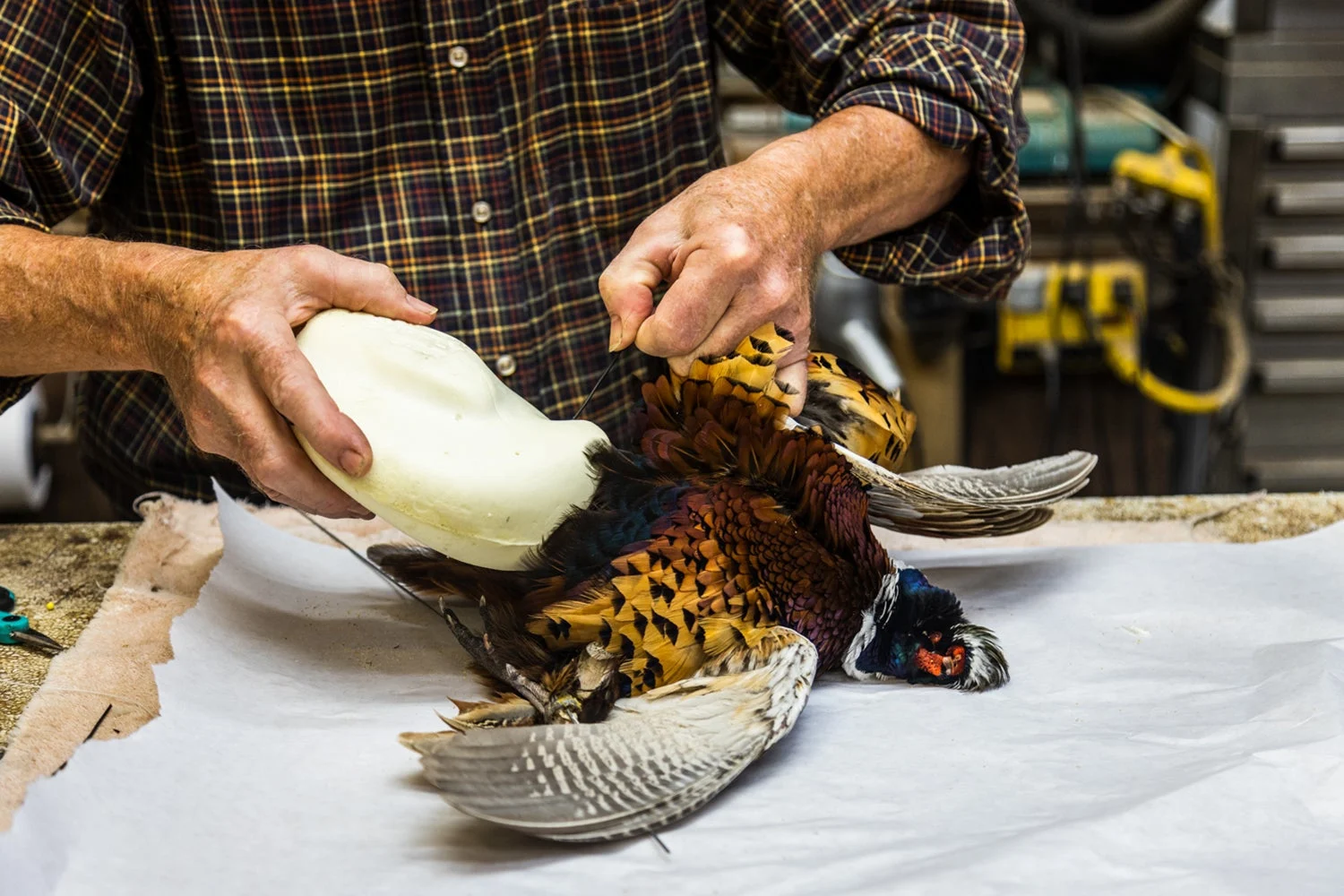
Andrew Hetherington
Harden places the form inside the pheasant skin. Some forms are too small, and some are too big. Harden needs to see what he’s working with and if he’ll need to add or take foam off of the form.

Andrew Hetherington
Here Harden starts to poke the wires from the legs and wings through he form. He also continues to check the fit of the form to make sure it’s just right—not too tight and not too loose.
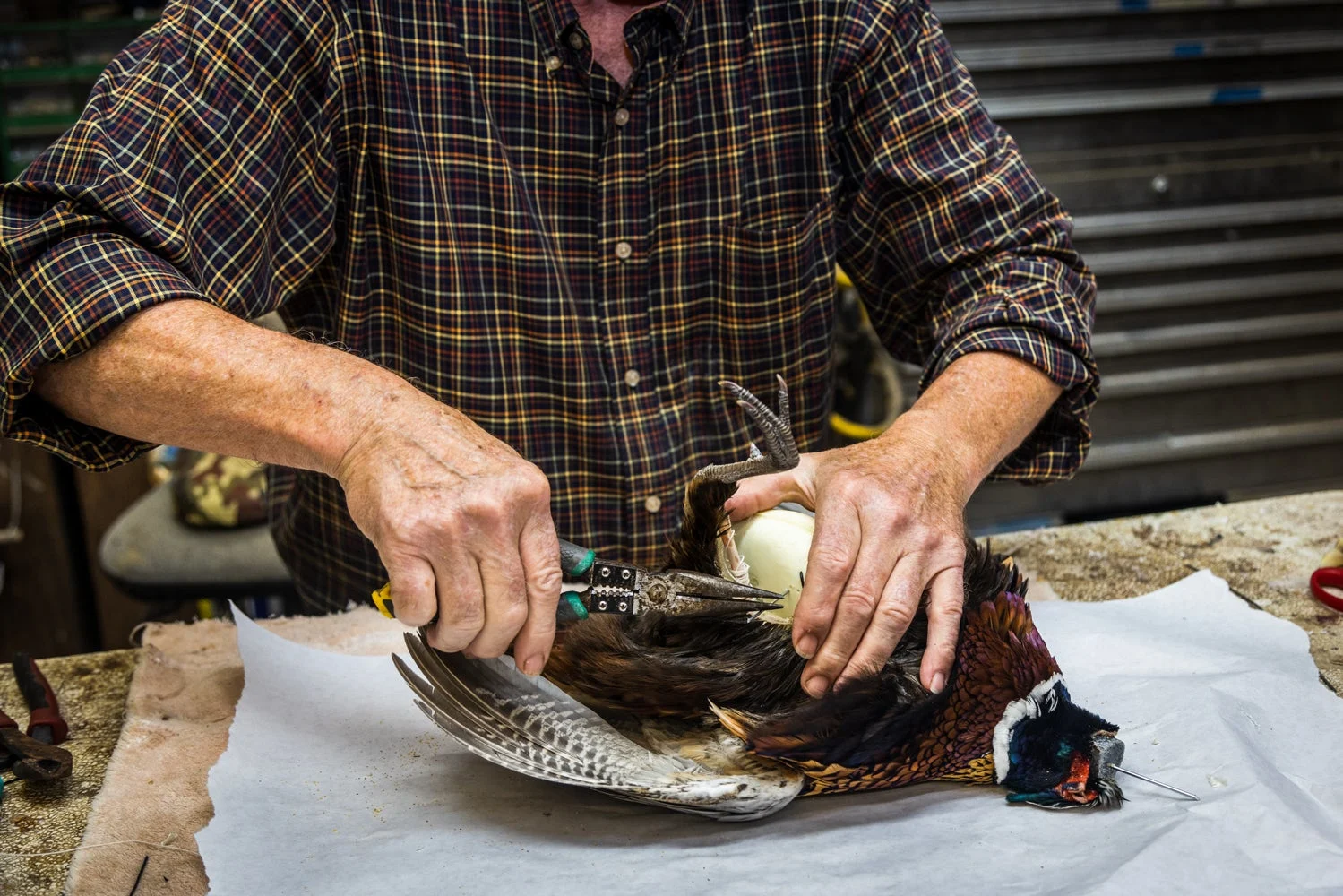
Andrew Hetherington
With the legs and wings in place, there is excess wire from each limb poking through the form. Harden uses a needle-nose plier to crimp the wire and lock it to the body.
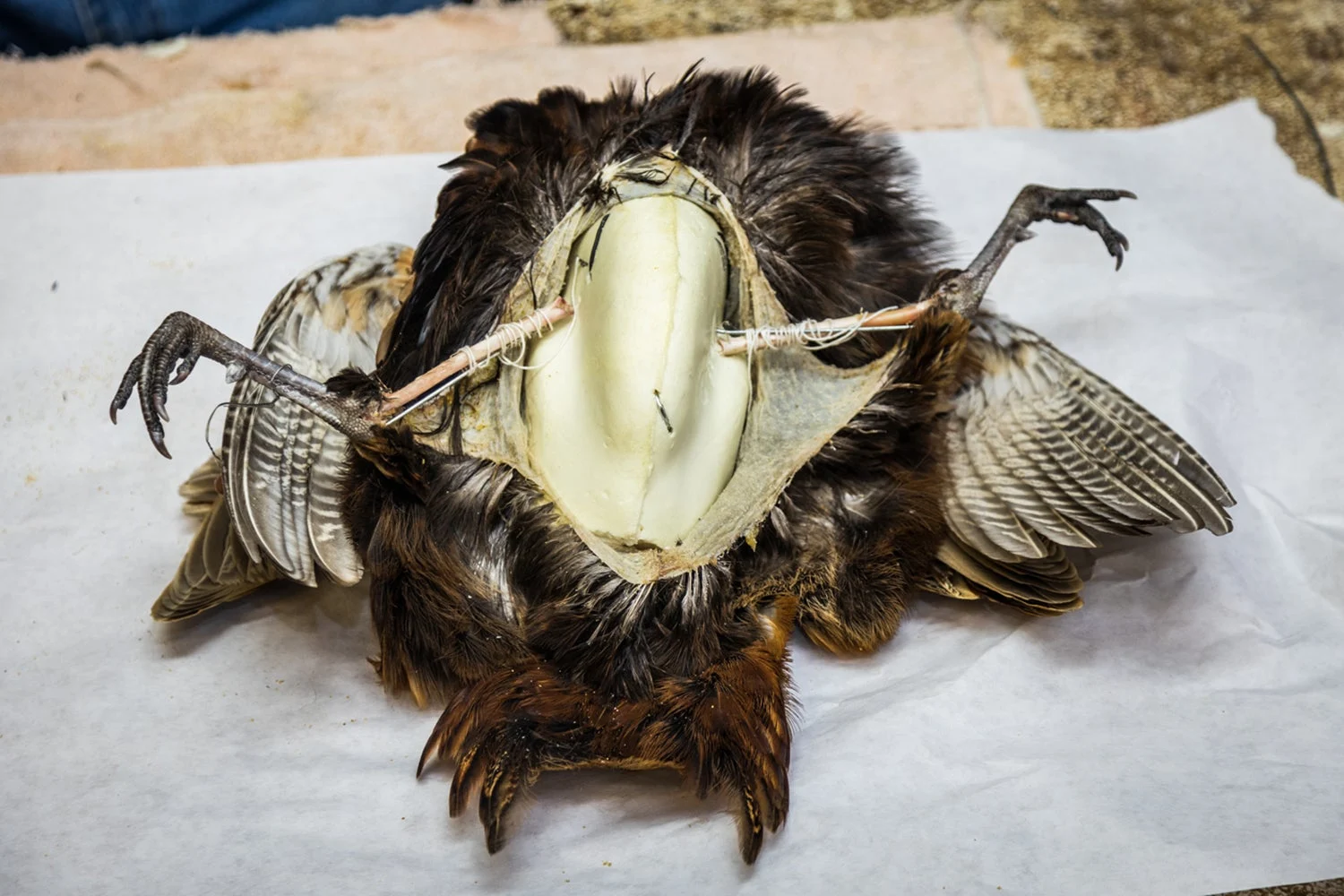
Andrew Hetherington
The bottom half of the bird is ready to be sewn up. Harden will now move onto the head and neck.
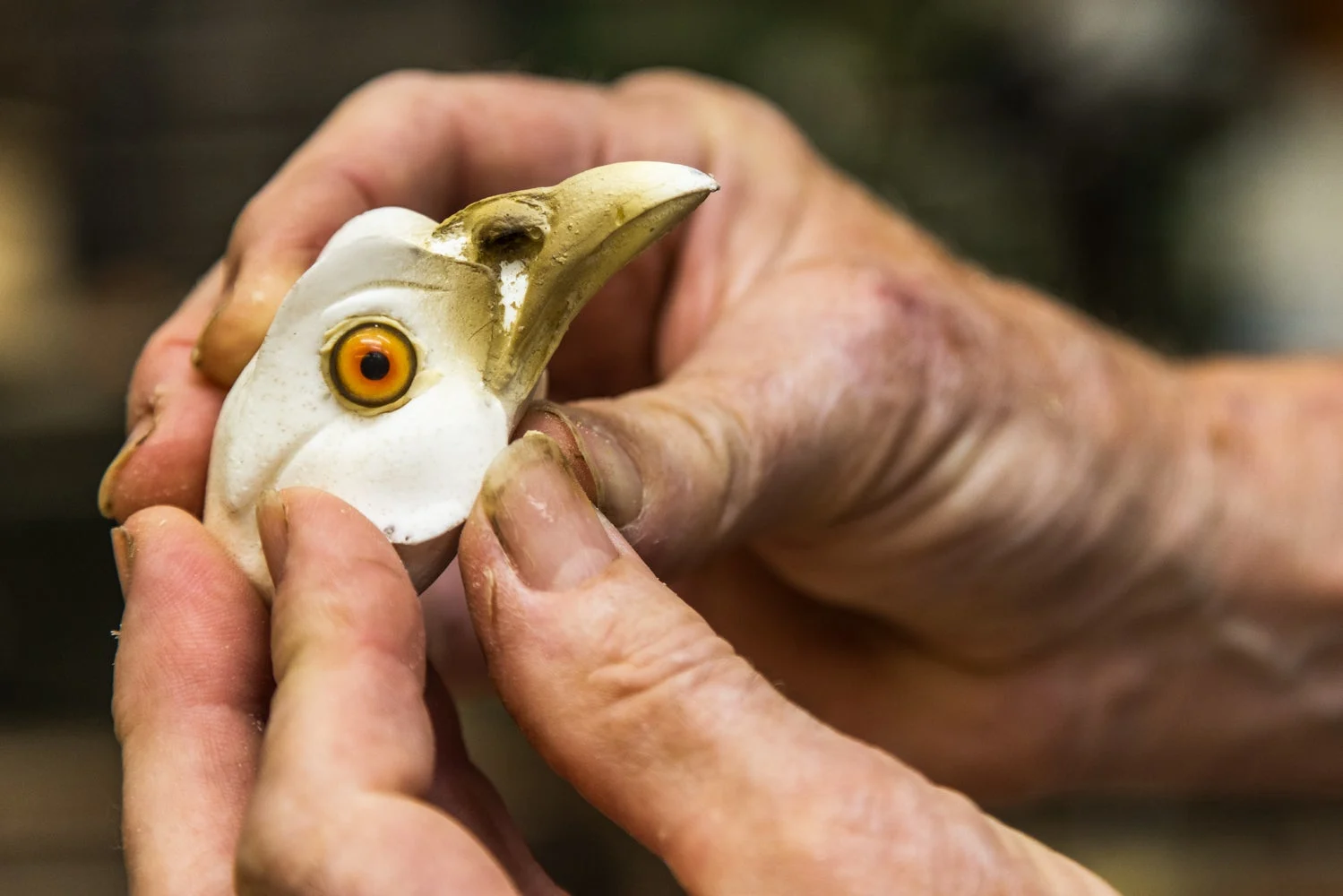
Andrew Hetherington
Harden inspects a plastic reproduction pheasant head after he’s set the glass eyes to make sure they’re in the right place. Harden orders reproduction heads for most of his bird mounts, but if he runs into a bird he doesn’t have a head for, he’ll go “old school,” and use the bird’s skull. For birds like quail, snipe, and woodcock, he needs to use the bird’s skull.
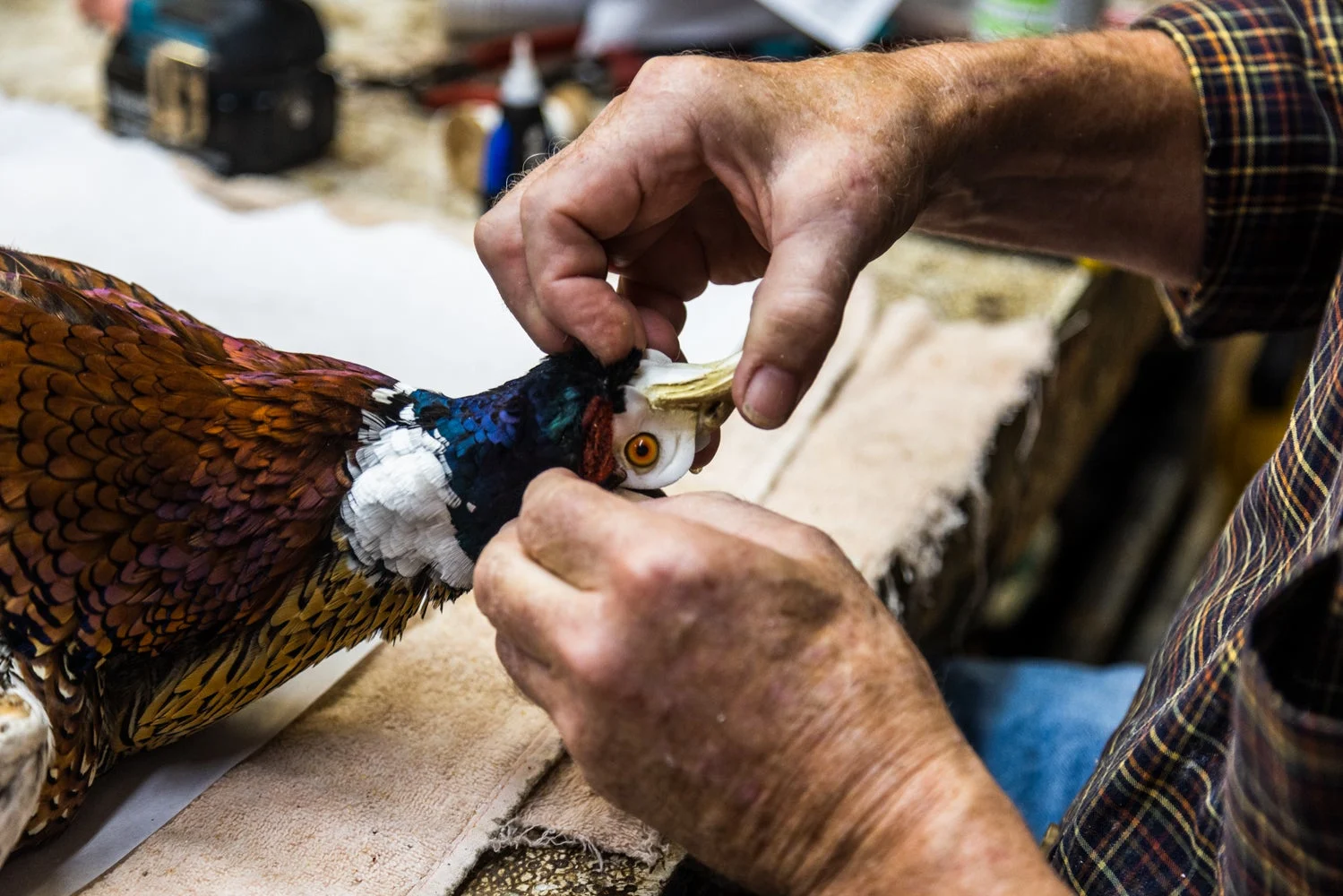
Andrew Hetherington
Here, Harden pulls the neck and face skin over the reproduction head to test fit and make sure the foam neck is not too long or too short. Pheasant heads are very difficult to skin. Harden uses a #10 scalpel blade to do the job.
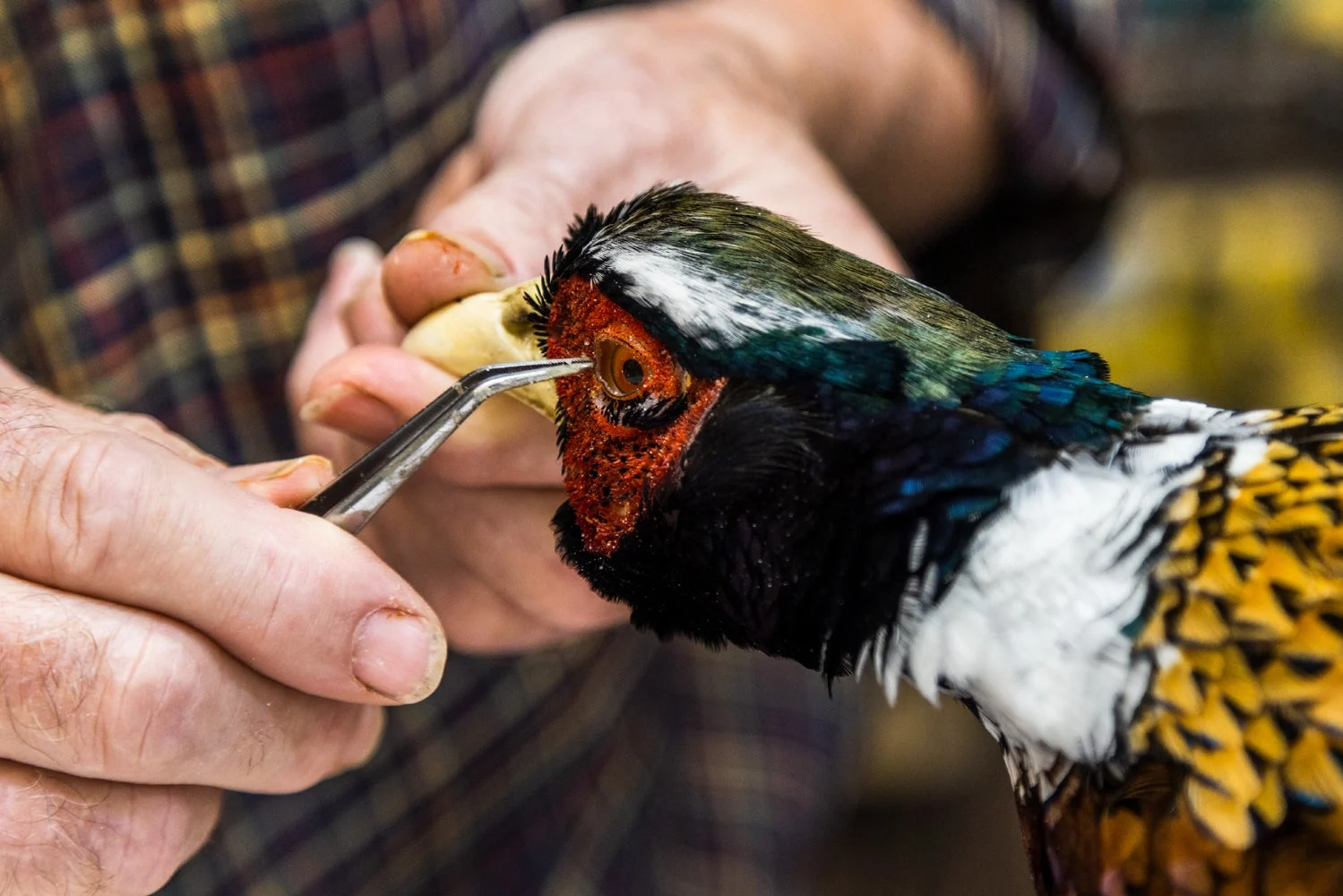
Andrew Hetherington
Stretching a birds skin over the head is one of the more difficult parts of the process. Harden pulls the pheasant’s face over the eye with tweezers. After making sure everything is in place, he’ll use super glue to fix the skin in place. The glue will dry in seconds, and Harden only has one chance to get this right.

Andrew Hetherington
With the head and neck finished, Harden squeezes caulk between the foam body and the skin. He’ll use different kinds of caulk depending on the kind bird he’s working on. Caulk sticks to the feather follicles on the back side of the skin and, depending on drying time, will remain malleable while Harden arranges each feather.
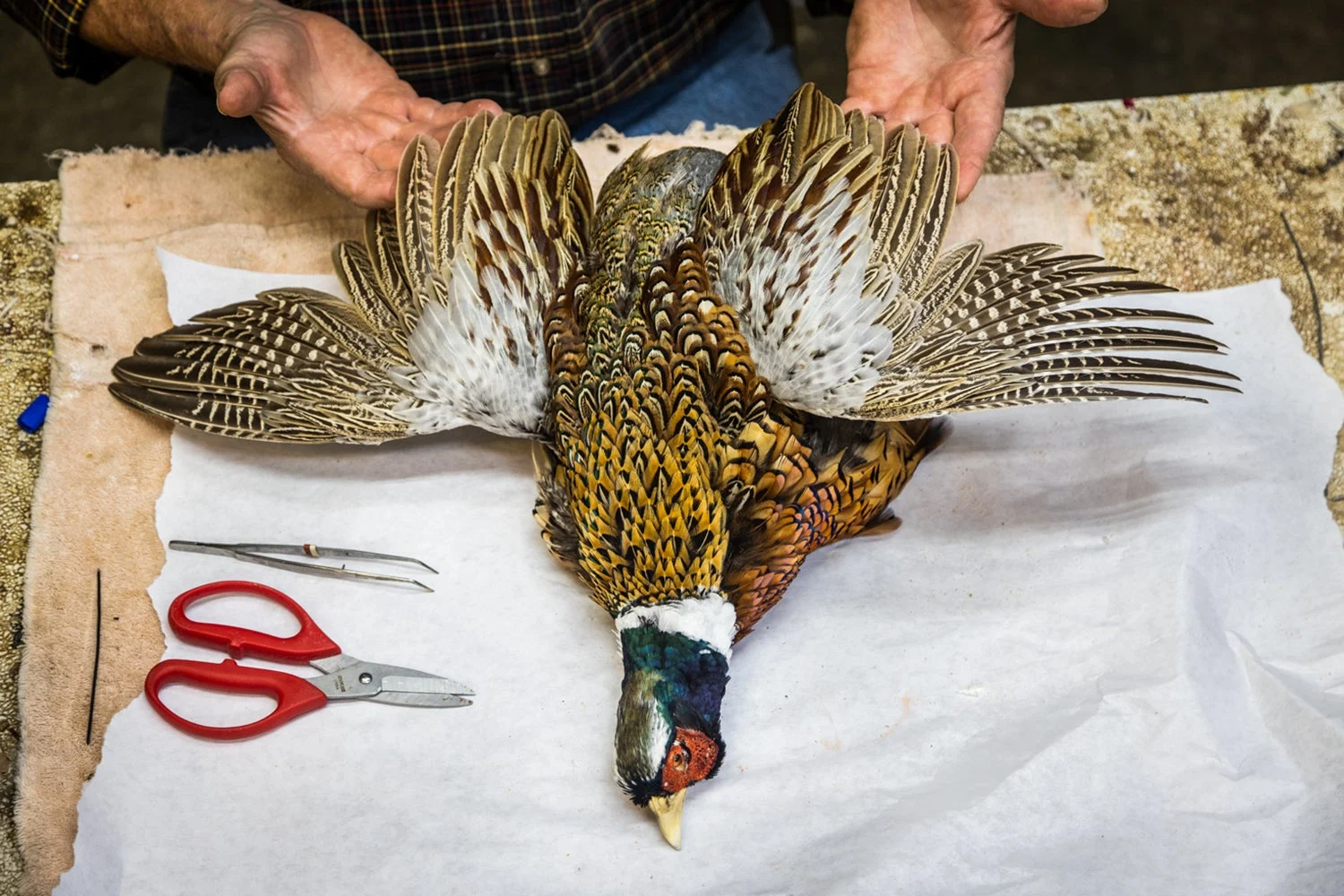
Andrew Hetherington
With the pheasant mounted and caulked, Harden is now ready to “groom” the bird and add the tail feathers.
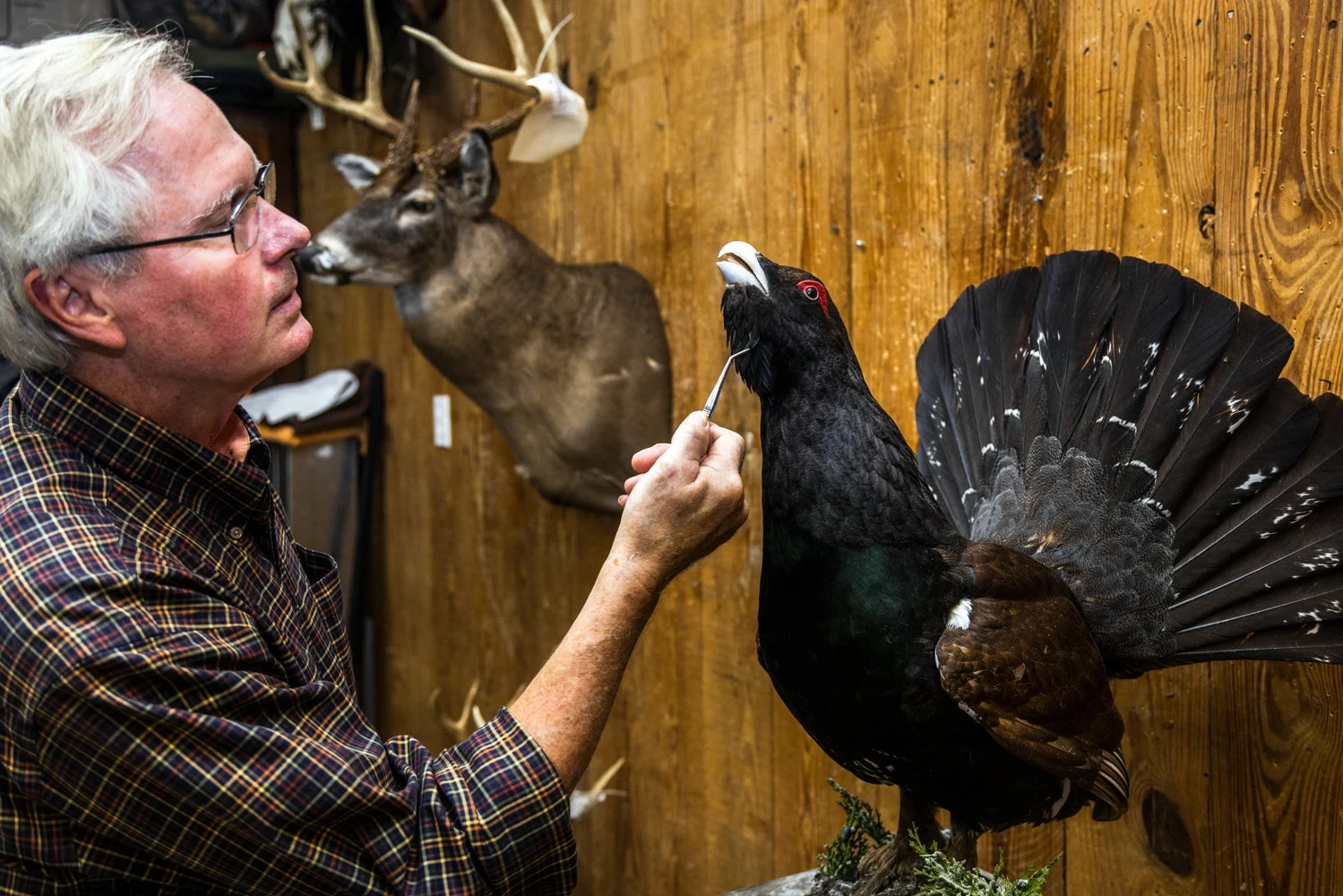
Andrew Hetherington
Grooming is the last step of the process. It involves adjusting each feather on a mount with a pair of tweezers to make sure they’re all in the right place. We didn’t have time to see Harden groom the pheasant he was working on, but we did have time to see him work on this Capercaille. The caulk under the skin keeps the feathers in place temporarily while Harden works. Harden will spend hours grooming a bird so it helps to have caulk that dries slowly. When the caulk does dry, it will fix every feather in place permanently.
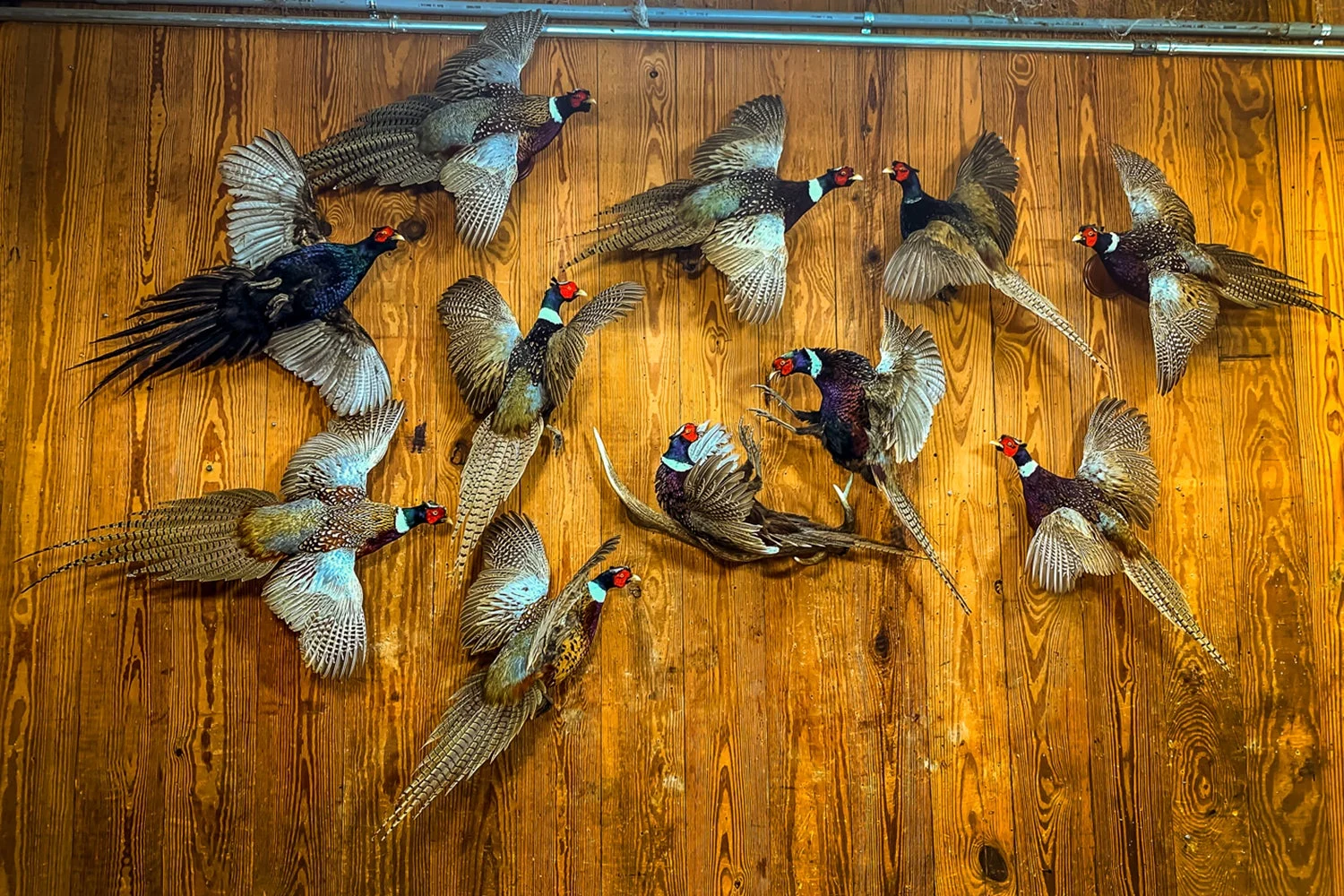
Edward Harden
A wall of finished pheasants in various positions.

